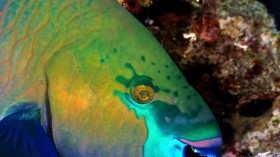By feeding data from CT scans into a 3-D printer, researchers can make accurate copies of fossilized bones, according to new research published in the journal Radiology.
There are numerous advantages to making 3-D prints of fossils, which are typically stored in protective plaster casts to prevent damage. Analyzing a fossil usually requires removal from the plaster cast, which opens the possibility of damaging or destroying the fossil itself.
"The most important benefit of this method is that it is non-destructive, and the risk of harming the fossil is minimal," said study author Ahi Sema Issever from the Department of Radiology at Charité Campus Mitte in Berlin. "Also, it is not as time-consuming as conventional preparation."
To test the feasibility of using CT scans and 3-D printing to produce a copy of fossilized bone, the research team selected an unidentified fossil from Museum für Naturkunde, a major natural history museum in Berlin. The identity of the fossil was unknown because it and others like it were buried under rubble in the museum's basement after the building was hit by a bombing raid in World War II. Since then museum staff has had difficulty sorting and identifying the plaster fossil jackets retrieved from the rubble.
The CT scan employed a 320-slice multi-detector system that yielded a clear picture of the fossil encased in the plaster. The scan rendered the fossil in so much detail that fractures and destruction on the original pieces were visible.
As costs of 3-D printers continue to drop, more and more operations are able to gain access to the technology, the researchers said. Issever noted that 3-D printing fossils has great research advantages because the data collected by the high-definition CT scans can be shared amongst research groups and the 3-D printers can essentially make endless copies of the fossils, allowing them to be shared and displayed at a variety of institutions without risk of damaging the original fossil itself.
"The digital dataset and, ultimately, reproductions of the 3-D print may easily be shared, and other research facilities could thus gain valuable informational access to rare fossils, which otherwise would have been restricted," Issever said. "Just like Gutenberg's printing press opened the world of books to the public, digital datasets and 3-D prints of fossils may now be distributed more broadly, while protecting the original intact fossil."
© 2024 NatureWorldNews.com All rights reserved. Do not reproduce without permission.





